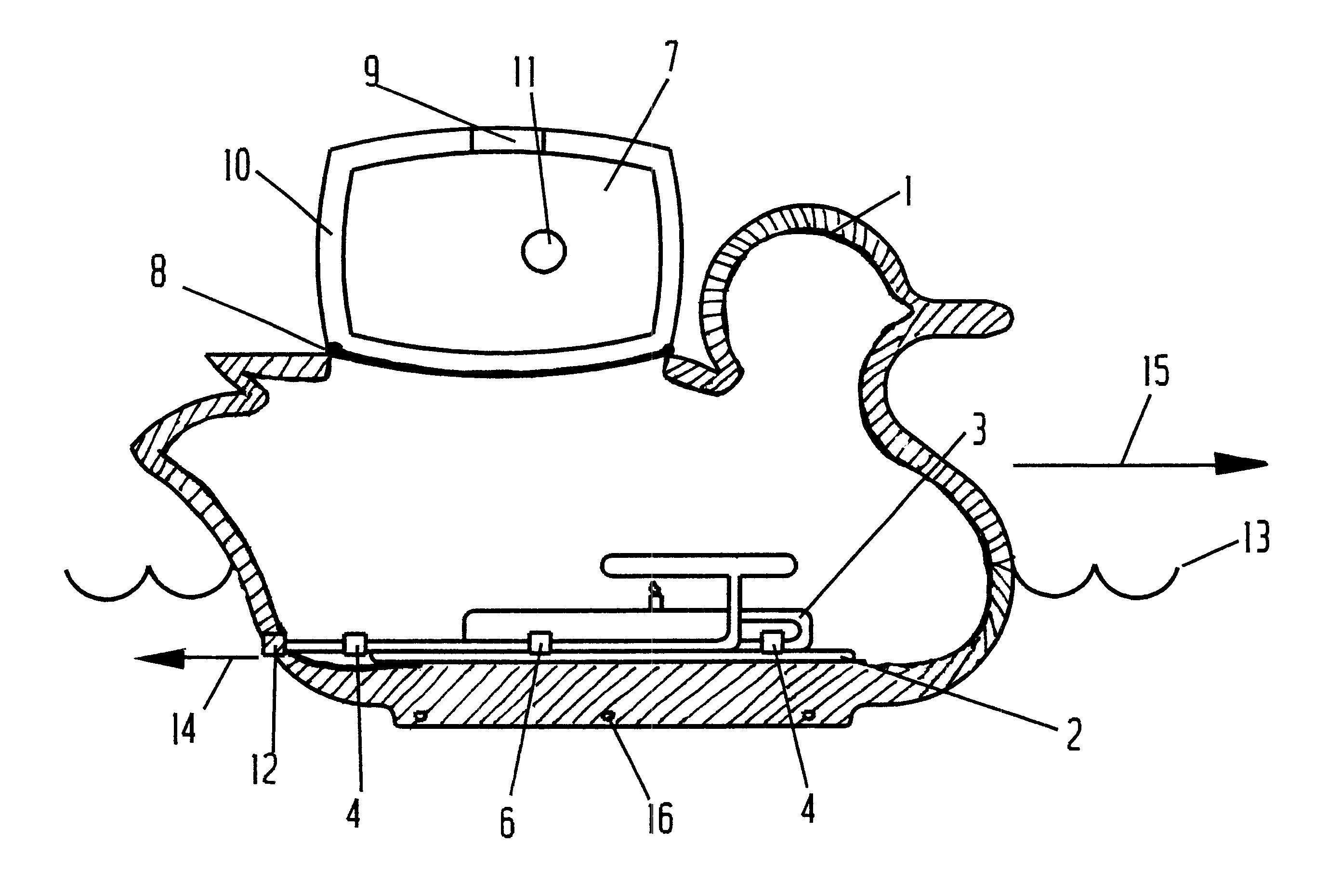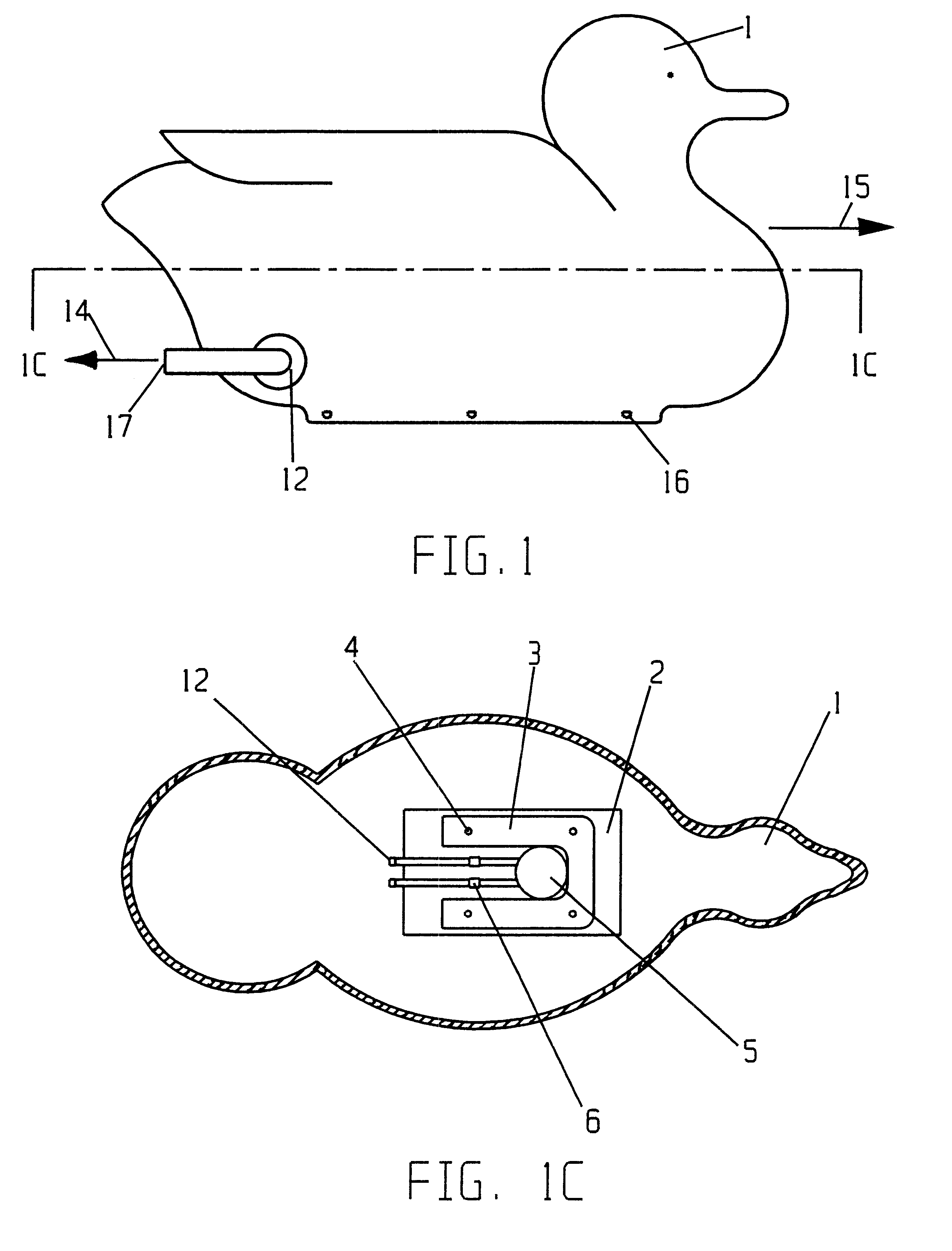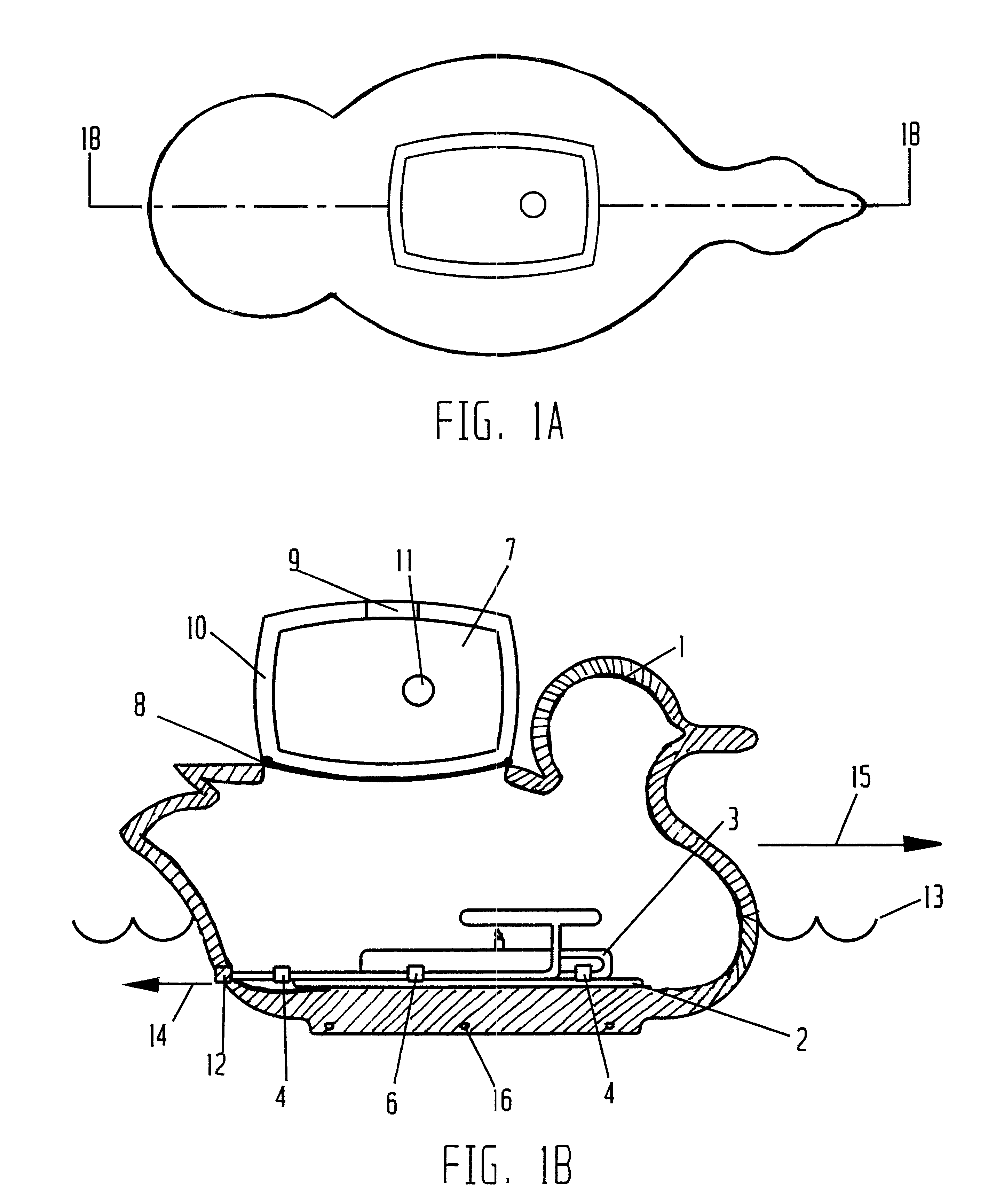Steam jet propelled waterfowl decoy
a technology of waterfowl and steam jet, which is applied in the field of floating waterfowl decoys, can solve the problems of low temperature battery performance, poor battery replacement cost, and still not lifelike, and achieve the effects of avoiding corrosion of electrical connections, low cost, and stable heavy battery replacement costs
- Summary
- Abstract
- Description
- Claims
- Application Information
AI Technical Summary
Problems solved by technology
Method used
Image
Examples
Embodiment Construction
The preferred embodiment of the steam jet propelled floating decoy is shown in FIG. 1 (perspective view of decoy), FIG. 1A (top view), FIG. 1B (sectional view cut away to show interior apparatus) and FIG. 1C (sectional top view showing mounting platform). A rigid to semi-rigid commercial floating waterfowl decoy 1 of hollow or partially hollow construction with a rigid power assembly mounting platform 2 glued to the interior floor of the decoy, from the stern forward. Fuel container-burner unit 3 is attached to the upper surface of mounting platform 2 by fuel container fasteners 4. Steam jet motor unit with steam tubing 5 is held to upper surface of mounting platform 2 with releasably rigid fasteners 6 and distal ends of tubing extend through waterproof grommets 12 to a position flush with the exterior surface of the decoy shell at the stern of the decoy below the water's surface. Access hatch 7 is located on the superior surface of the decoy hull, is oblong in shape, and comprises ...
PUM
 Login to View More
Login to View More Abstract
Description
Claims
Application Information
 Login to View More
Login to View More - R&D
- Intellectual Property
- Life Sciences
- Materials
- Tech Scout
- Unparalleled Data Quality
- Higher Quality Content
- 60% Fewer Hallucinations
Browse by: Latest US Patents, China's latest patents, Technical Efficacy Thesaurus, Application Domain, Technology Topic, Popular Technical Reports.
© 2025 PatSnap. All rights reserved.Legal|Privacy policy|Modern Slavery Act Transparency Statement|Sitemap|About US| Contact US: help@patsnap.com



